Solar eclipse of February 15, 2018
A partial solar eclipse took place on February 15, 2018. A solar eclipse occurs when the Moon passes between Earth and the Sun, thereby totally or partly obscuring the image of the Sun for a viewer on Earth. A partial solar eclipse occurs in the polar regions of the Earth when the center of the Moon's shadow misses the Earth.
| Solar eclipse of February 15, 2018 | |
|---|---|
.jpg.webp) From Olivos, Buenos Aires, Argentina | |
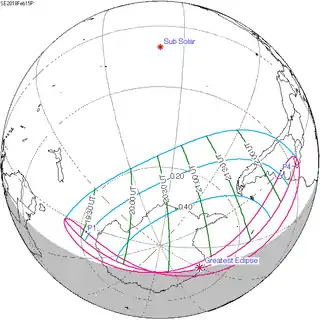 Map | |
| Type of eclipse | |
| Nature | Partial |
| Gamma | -1.2116 |
| Magnitude | 0.5991 |
| Maximum eclipse | |
| Coordinates | 71°S 0.6°E |
| Times (UTC) | |
| Greatest eclipse | 20:52:33 |
| References | |
| Saros | 150 (17 of 71) |
| Catalog # (SE5000) | 9547 |
The eclipse took place before sunset in the Southern Cone of South America.
Images

Gallery
.png.webp) Time lapse images as viewed from Olivos, Buenos Aires, Argentina
Time lapse images as viewed from Olivos, Buenos Aires, Argentina From Ramos Mejía, Argentina, 22:13 UTC
From Ramos Mejía, Argentina, 22:13 UTC
Related eclipses
Eclipses of 2018
Solar eclipses descending node 2015-2018
Solar eclipses 2015–2018
This eclipse is a member of a semester series. An eclipse in a semester series of solar eclipses repeats approximately every 177 days and 4 hours (a semester) at alternating nodes of the Moon's orbit.[1]
| Solar eclipse series sets from 2015–2018 | ||||||
|---|---|---|---|---|---|---|
| Descending node | Ascending node | |||||
| Saros | Map | Gamma | Saros | Map | Gamma | |
120._(32844461616).jpg.webp) Longyearbyen, Svalbard | 2015 March 20 Total |
0.9453 | 125 | 2015 September 13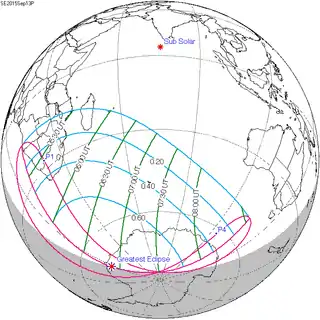 Partial |
-1.1004 | |
130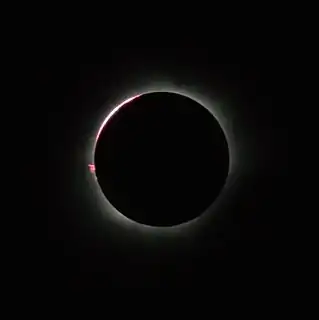 Balikpapan, Indonesia | 2016 March 9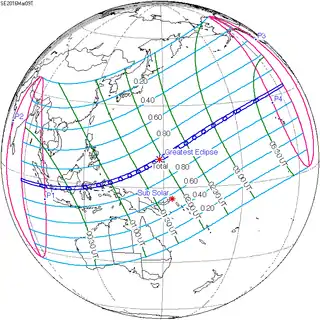 Total |
0.2609 | 135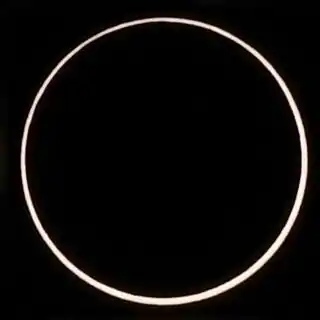 L'Étang-Salé, Réunion | 2016 September 1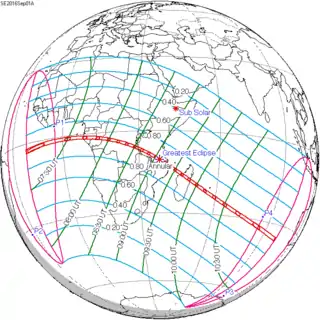 Annular |
-0.3330 | |
140 Partial from Buenos Aires | 2017 February 26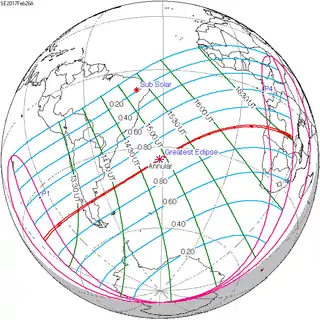 Annular |
-0.4578 | 145.jpg.webp) Casper, Wyoming | 2017 August 21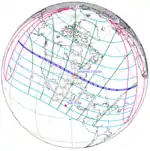 Total |
0.4367 | |
150.jpg.webp) Partial from Olivos, Buenos Aires | 2018 February 15 Partial |
-1.2117 | 155.jpg.webp) Partial from Huittinen, Finland | 2018 August 11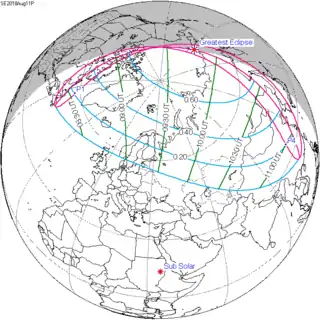 Partial |
1.1476 | |
| Partial solar eclipses on July 13, 2018, and January 6, 2019, occur during the next semester series. | ||||||
Metonic series
The metonic series repeats eclipses every 19 years (6939.69 days), lasting about 5 cycles. Eclipses occur in nearly the same calendar date. In addition, the octon subseries repeats 1/5 of that or every 3.8 years (1387.94 days). All eclipses in this table occur at the Moon's descending node.
| 21 eclipse events, progressing from north to south between July 11, 1953 and July 11, 2029 | ||||
|---|---|---|---|---|
| July 10–12 | April 29–30 | February 15–16 | December 4–5 | September 21–23 |
| 96 | 98 | 100 | 102 | 104 |
| July 12, 1915 | April 30, 1919 | February 15, 1923 | December 5, 1926 | September 22, 1930 |
| 106 | 108 | 110 | 112 | 114 |
| July 11, 1934 | April 30, 1938 | February 15, 1942 | December 4, 1945 | September 22, 1949 |
| 116 | 118 | 120 | 122 | 124 |
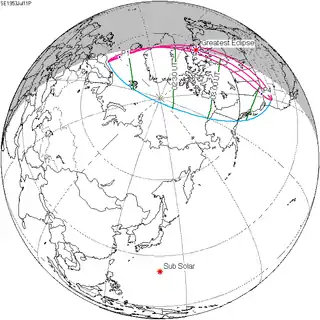 July 11, 1953 |
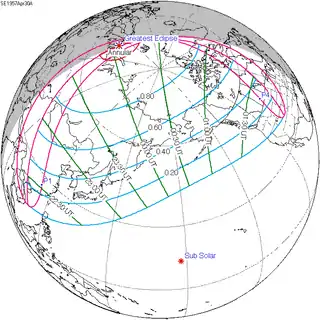 April 30, 1957 |
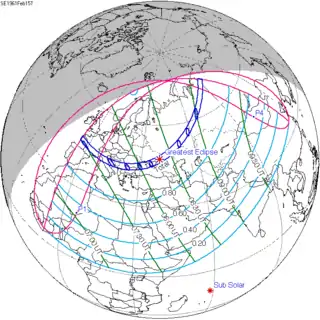 February 15, 1961 |
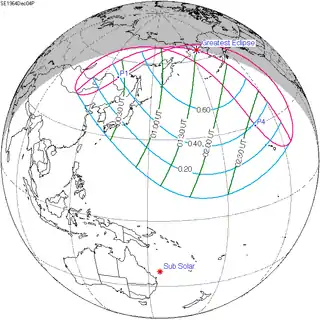 December 4, 1964 |
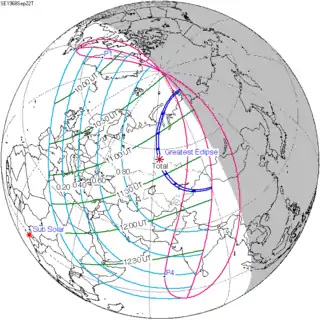 September 22, 1968 |
| 126 | 128 | 130 | 132 | 134 |
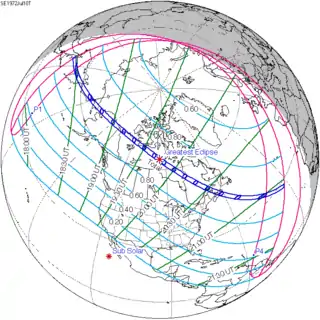 July 10, 1972 |
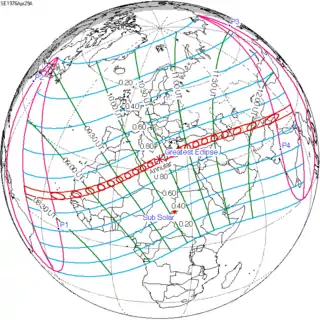 April 29, 1976 |
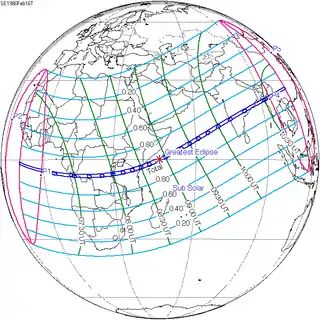 February 16, 1980 |
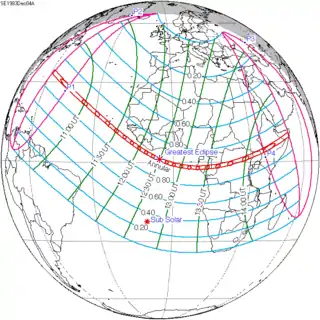 December 4, 1983 |
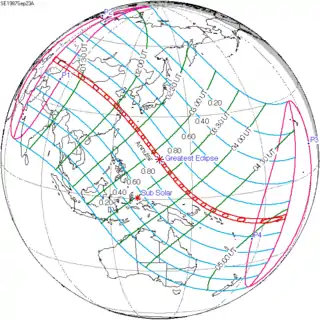 September 23, 1987 |
| 136 | 138 | 140 | 142 | 144 |
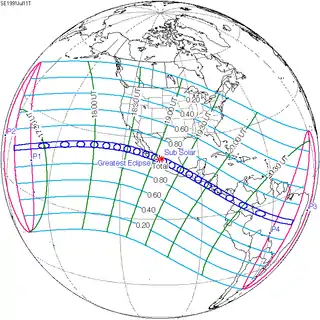 July 11, 1991 |
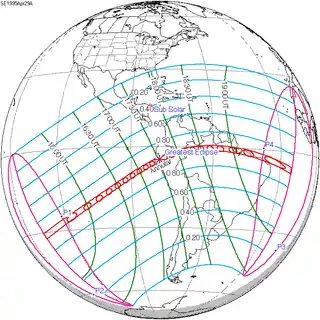 April 29, 1995 |
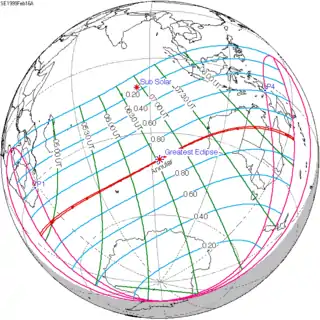 February 16, 1999 |
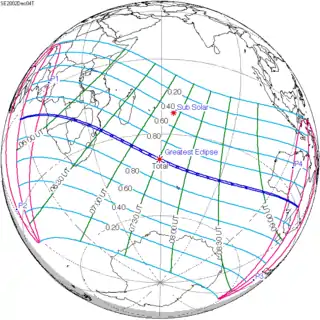 December 4, 2002 |
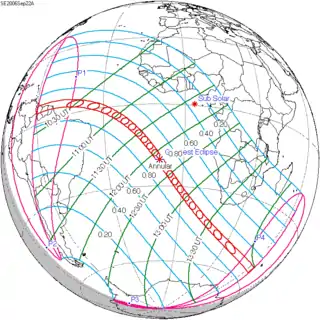 September 22, 2006 |
| 146 | 148 | 150 | 152 | 154 |
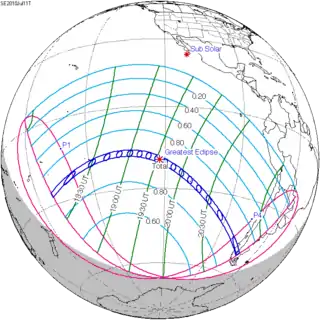 July 11, 2010 |
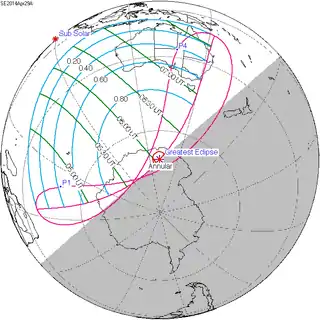 April 29, 2014 |
 February 15, 2018 |
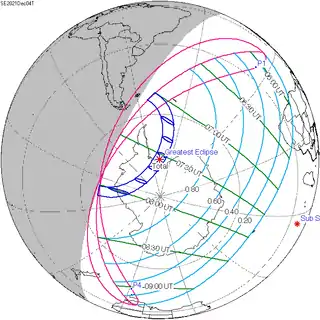 December 4, 2021 |
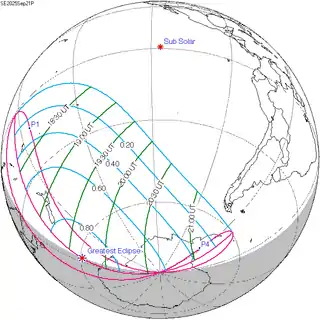 September 21, 2025 |
| 156 | 158 | 160 | 162 | 164 |
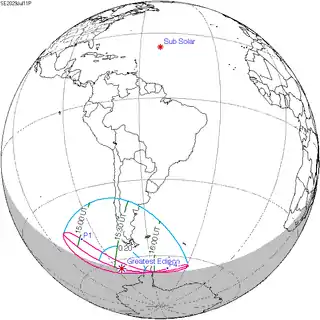 July 11, 2029 |
April 29, 2033 | February 15, 2037 | December 4, 2040 | September 21, 2044 |
- van Gent, R.H. "Solar- and Lunar-Eclipse Predictions from Antiquity to the Present". A Catalogue of Eclipse Cycles. Utrecht University. Retrieved 6 October 2018.
External links
| Wikimedia Commons has media related to Solar eclipse of 2018 February 15. |
- NASA chart
- NASA animation
- Partial Solar Eclipse of 2018 February 15
- APOD 2/20/2018

